Mike Nelson @ Hayward Gallery
22 February 2023 – 7 May 2023
Extinction Beckons
The world of Mike Nelson is an unsettling place. A world where abandoned spaces allude to lives once lived and those lives too appear to have been troubled.
His exhibition at the Hayward gallery is nothing short of breath taking in its scale and ambition, recreating as it does a number of Nelson’s ‘worlds’. The exhibition is dereliction and emptiness writ large and as the title suggests, the visitor is helplessly sucked in on the path to extinction.
The key areas are described below:
‘I, Imposter’ (2011)
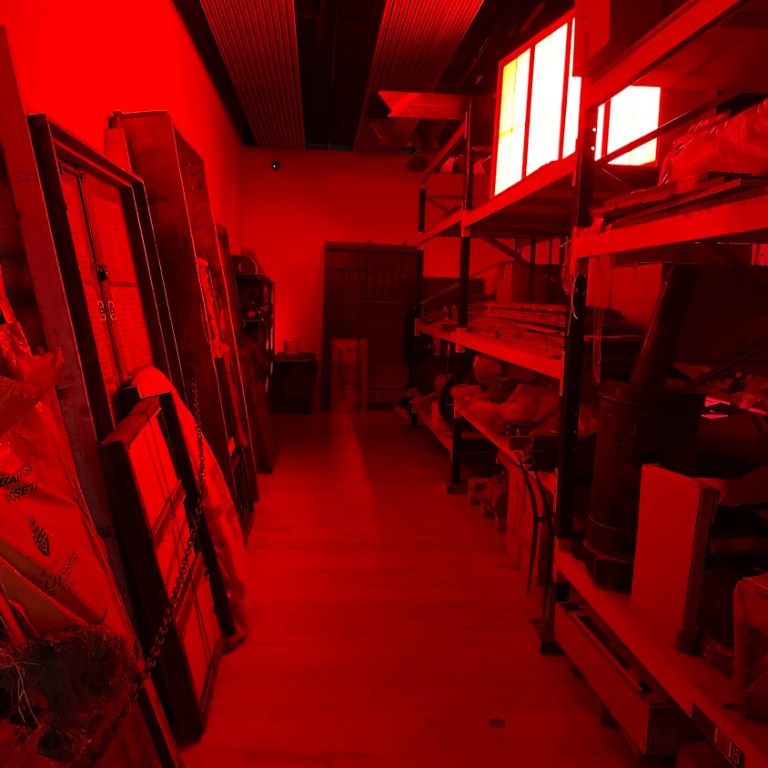
‘I, Imposter’ (2011) - detail
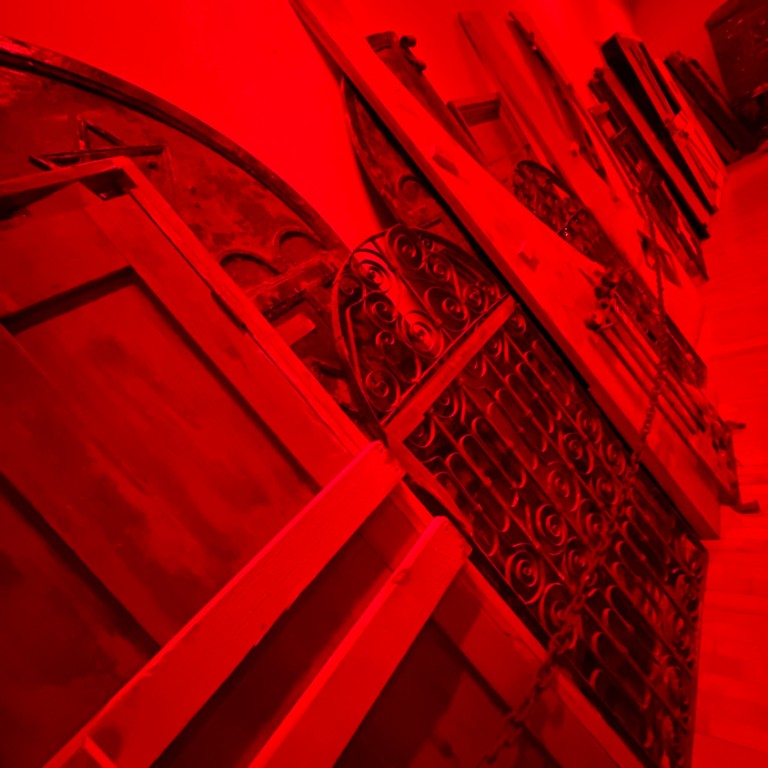
‘I, Imposter’ (2011) - detail
A storage room reminiscent of a reclaim yard. Shelves stacked with old timbers and where walls are lined with countless doors all bathed in a deep red light. Doors, which in an earlier life would have opened on to other worlds themselves, here, lie abandoned. Their other worlds now closed to us, possibly gone forever. Our confinement in this space is claustrophobic.
‘The Deliverance and the Patience’ (2001)
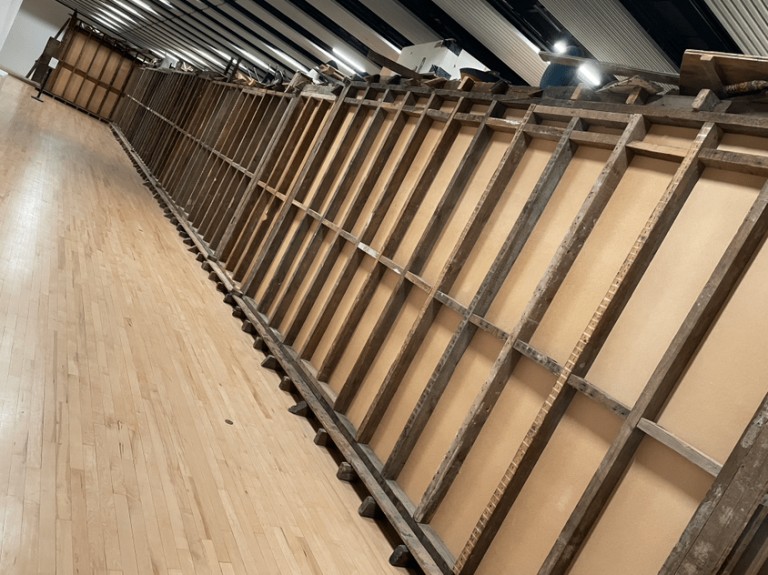
‘The Deliverance and the Patience’ (2001)
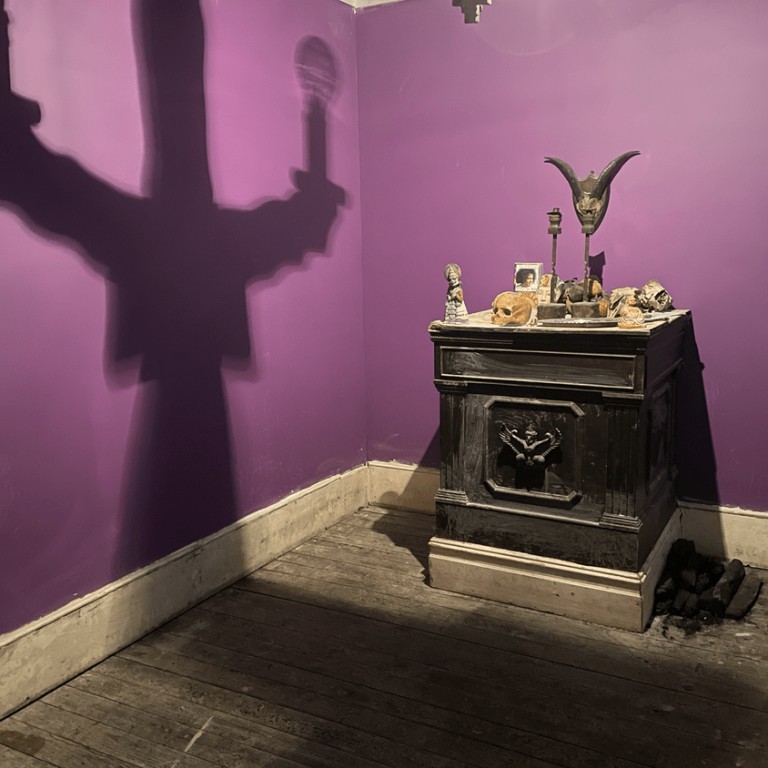
‘The Deliverance and the Patience’ (2001) - detail
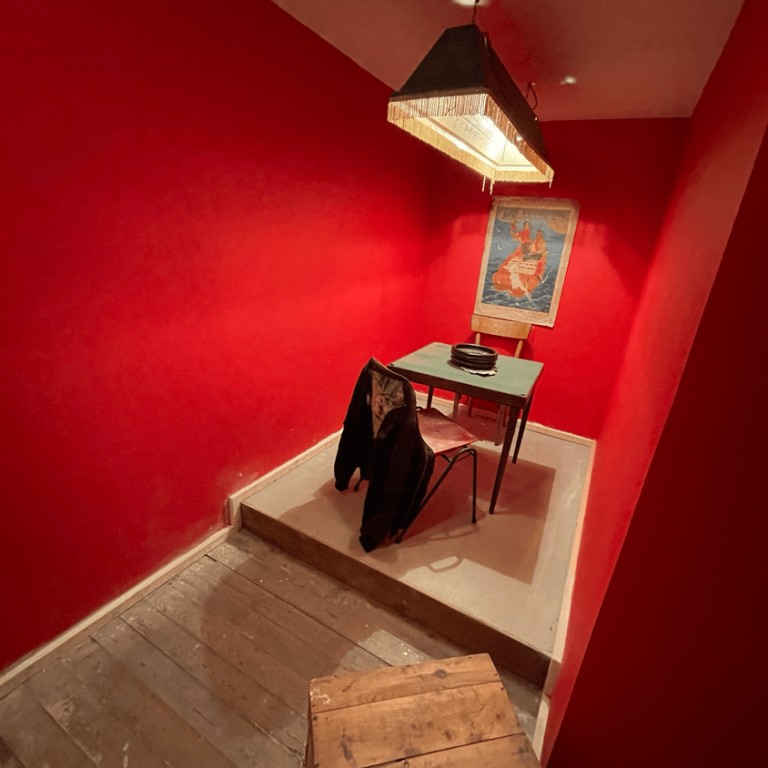
‘The Deliverance and the Patience’ (2001) - detail
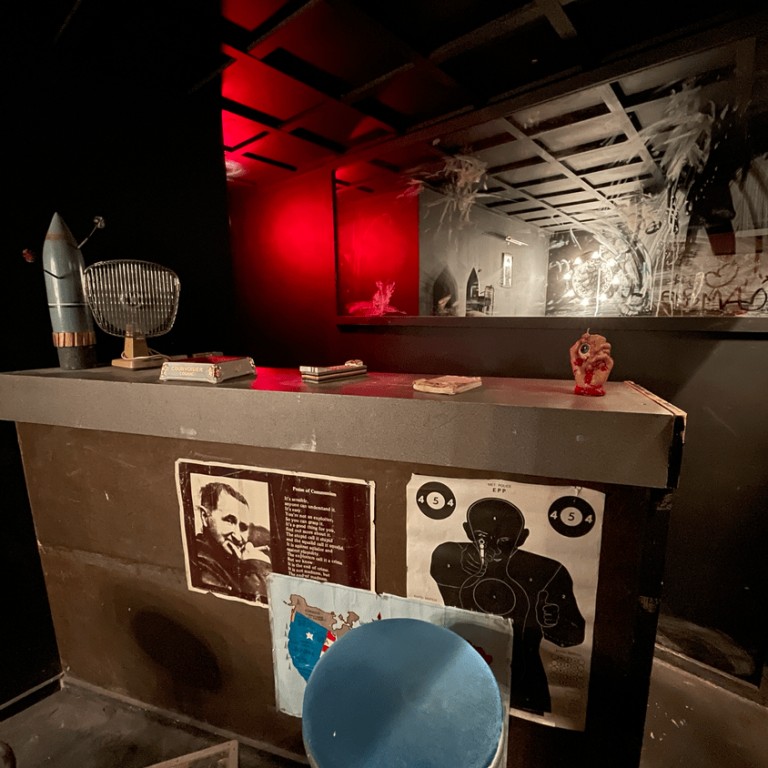
‘The Deliverance and the Patience’ (2001) - detail
A sarcophagus like structure filling the length of the second gallery. From the outside it is clear that its contents have been entombed. Entering through a small door, the viewer is left abandoned within a labyrinthine network of corridors. Doors leading to deserted rooms, emptied of life. Remnants of a past life litter these rooms and corridors. This is how I envisage a place where its inhabitants all left in a hurry. The maze of corridors are unsettling; you don’t want to get lost. You enter a room and find it’s familiar, you realise you have already been there but through a different door.
The stuff of nightmares.
‘Triple Bluff Canyon (The Woodshed)’ (2004)
Thinking the exhibition couldn’t get better, Nelson gives us the amalgamation of ‘Triple Bluff Canyon’, ‘M25’ and ‘I, Impostor (the darkroom)’.
A concrete bunker partially buried in sand, the sand littered with remnants of burst tyres. This is what happens to civilisations over time as nature reclaims the space. Parallels with the ending of the original ‘Planet of the Apes’ starring Charlton Heston, come to mind although a more ready comparison is with Robert Smithson’s ‘Partially Buried Woodshed’. In each of these scenarios the artist/film maker presents us with the afterlife of human activity; decay, abandonment and decomposition. Placed inside a gallery, there isn’t even a slight breeze to suggest some life may be present.
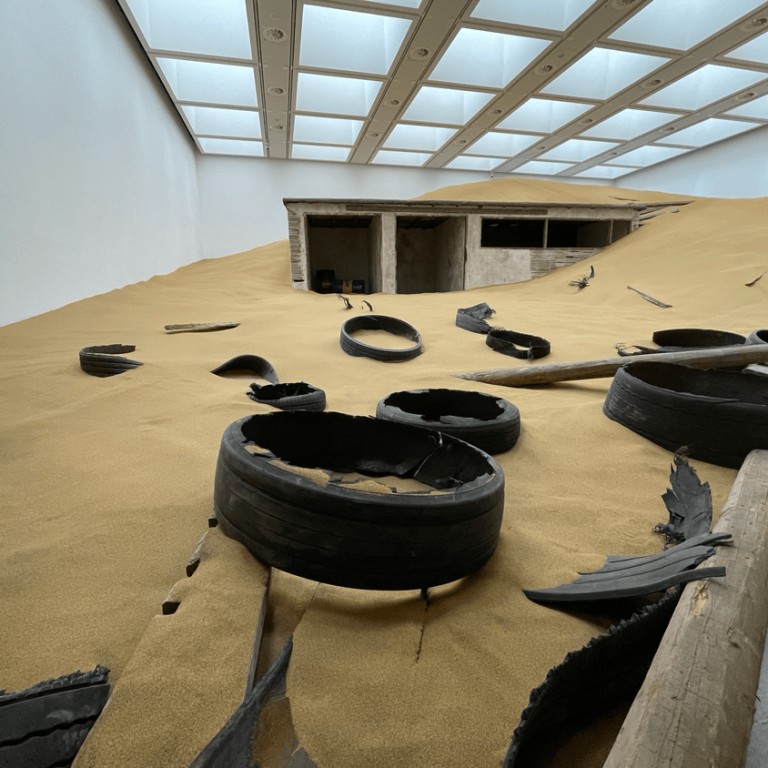
‘Triple Bluff Canyon (The Woodshed)’ and ‘M25’
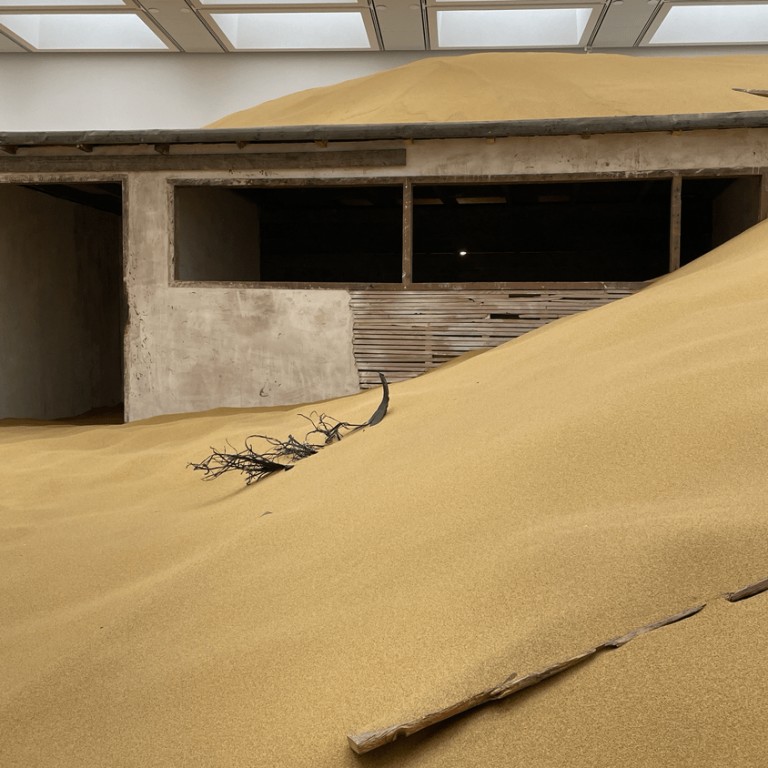
‘Triple Bluff Canyon (The Woodshed)’ - detail
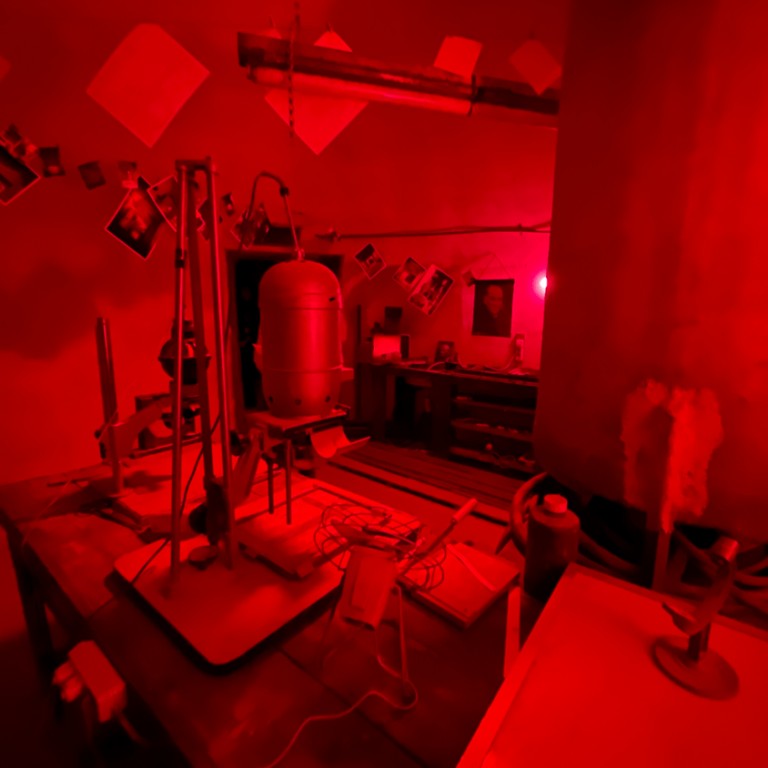
‘I, Imposter (the darkroom)’ (2011)
A corridor off to the right leads us to the heart of the ‘woodshed’. ‘I, Imposter (the darkroom)’ is the heart, but one which has long stopped beating. Bathed in red, it houses a disused darkroom. Once again, an environment deserted and left in a hurry, its memories and earlier life recorded on the developed photographs hanging from the ceiling. What point is Nelson saying here? That the analogue world of photography has also been abandoned and neglected as the buildings that surround us? Time waits for nothing.
‘Studio Apparatus for Kunsthalle Münster’ (2004)
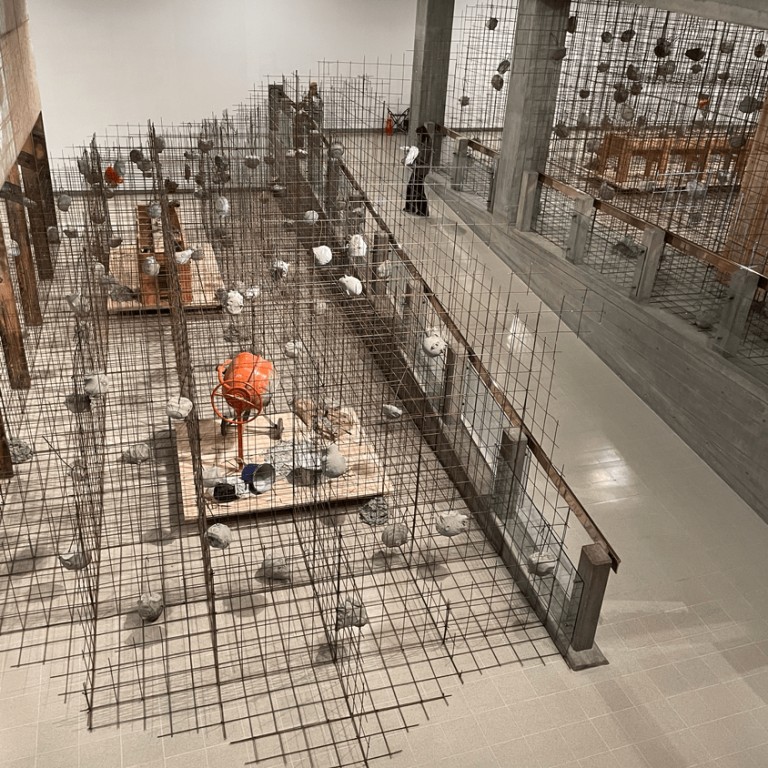
‘Studio Apparatus for Kunsthalle Münster’
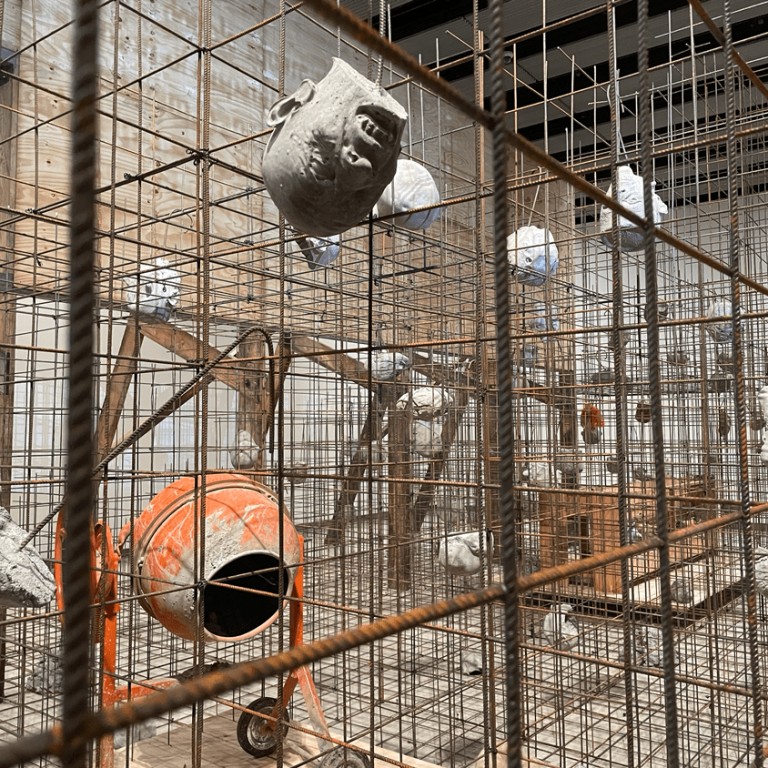
‘Studio Apparatus for Kunsthalle Münster’ - detail
The scale and complexity of this installation is dizzying. A huge mesh of reinforcement rods arranged in a lattice formation containing construction materials and (predominantly) concrete cast heads suspended and attached throughout. Is this a reference to the nature of Nelson’s site specific works which use discarded and found objects? That these objects contain both a past and an as yet undetermined future? This future dependent on the mind of the artist to repurpose them? Who knows? Yet, what is undeniable is the sheer bravado of the work.
I left the exhibition simultaneously disorientated and awestruck by the scale and imagination of Nelson’s work. Some will argue that all he has achieved is to put a lot of discarded objects together, but in my mind that is to miss the point.
What Nelson achieves here is a window into the soul of human life.
Its origins and eventually its extinction.